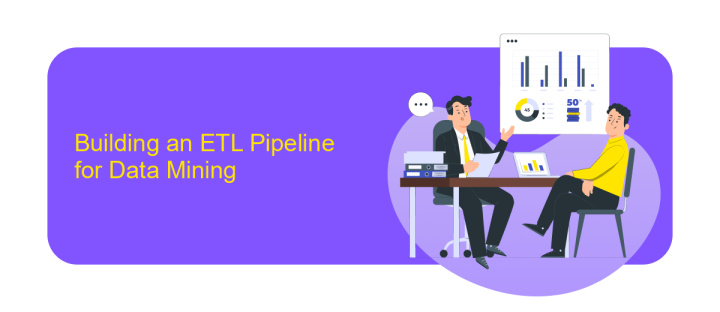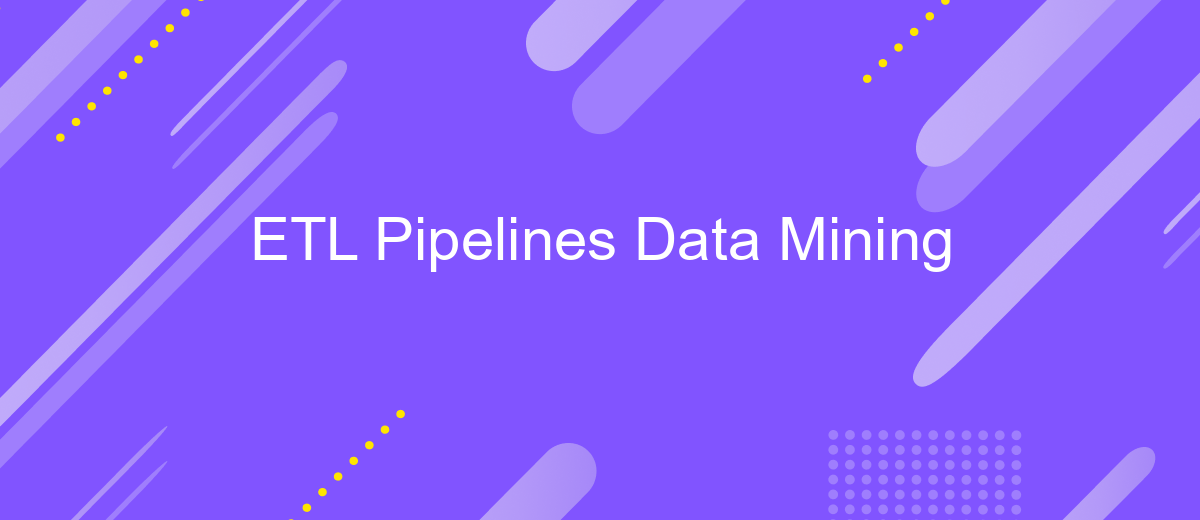ETL Pipelines Data Mining
ETL (Extract, Transform, Load) pipelines are essential in the realm of data mining, enabling the seamless integration and transformation of raw data into valuable insights. By automating the extraction, transformation, and loading processes, ETL pipelines facilitate efficient data analysis and support informed decision-making. This article explores the importance, components, and best practices of ETL pipelines in the context of data mining.
Introduction to ETL Pipelines and Data Mining
ETL pipelines and data mining are fundamental processes in the field of data analytics. ETL, which stands for Extract, Transform, Load, involves extracting data from various sources, transforming it into a suitable format, and loading it into a data warehouse for analysis. Data mining, on the other hand, refers to the practice of examining large datasets to uncover patterns, correlations, and insights.
- Extraction: Collecting data from diverse sources such as databases, APIs, and flat files.
- Transformation: Cleaning, normalizing, and structuring the data to make it suitable for analysis.
- Loading: Storing the transformed data into a data warehouse or database for further analysis.
- Data Mining: Analyzing the data to discover meaningful patterns and insights.
Tools like ApiX-Drive can streamline the ETL process by automating data extraction and integration from various sources, making it easier to set up and manage data pipelines. By leveraging such services, businesses can focus more on analyzing data and deriving actionable insights rather than getting bogged down by the technical complexities of data integration.
Building an ETL Pipeline for Data Mining

Building an ETL pipeline for data mining involves several crucial steps. First, data extraction is performed from various sources such as databases, APIs, and flat files. This step ensures that all relevant data is collected for further processing. Tools like ApiX-Drive can be particularly useful for seamless integration and data extraction from multiple sources, simplifying the process and saving time. Once the data is extracted, it undergoes transformation where it is cleaned, normalized, and formatted to meet the requirements of the data mining algorithms.
The final step is loading the transformed data into a data warehouse or a data repository where it can be accessed for analysis. This step ensures that the data is stored in a structured manner, making it easy to retrieve and analyze. Proper scheduling and monitoring mechanisms should be in place to ensure the pipeline runs smoothly and efficiently. By following these steps, an effective ETL pipeline can be established to facilitate robust data mining operations.
Data Transformation and Cleaning for Data Mining

Data transformation and cleaning are crucial steps in preparing datasets for data mining. These processes ensure that the data is accurate, consistent, and usable for analysis. Poorly transformed or unclean data can lead to incorrect insights and faulty decision-making.
- Data Cleaning: This involves removing or correcting errors, handling missing values, and eliminating duplicates. Techniques such as imputation, outlier detection, and normalization are commonly used.
- Data Transformation: This step includes converting data into a suitable format for analysis. It may involve normalization, aggregation, and encoding categorical variables. Tools like ApiX-Drive can automate the integration and transformation of data from various sources.
- Data Integration: Combining data from different sources into a cohesive dataset is essential. ApiX-Drive can streamline this process by connecting disparate data sources and ensuring seamless integration.
Effective data transformation and cleaning set the foundation for successful data mining. By using automated tools and following best practices, organizations can ensure their data is ready for insightful analysis and decision-making.
Data Mining Algorithms and Techniques

Data mining algorithms and techniques are essential for extracting meaningful patterns and insights from large datasets. These methods enable organizations to uncover hidden trends, predict future outcomes, and make data-driven decisions. Various algorithms cater to different types of data and analysis requirements, ensuring a versatile approach to data mining.
One of the most popular techniques is classification, which involves categorizing data into predefined classes. Another widely used method is clustering, which groups similar data points together based on specific characteristics. Association rule learning helps identify relationships between variables in large datasets, while regression analysis is used to predict numerical outcomes based on historical data.
- Classification: Decision Trees, Naive Bayes, Support Vector Machines
- Clustering: K-means, Hierarchical Clustering, DBSCAN
- Association Rule Learning: Apriori, Eclat, FP-Growth
- Regression Analysis: Linear Regression, Logistic Regression
These algorithms are implemented using various tools and platforms, which facilitate the integration of data from multiple sources. For instance, services like ApiX-Drive can streamline the process of connecting and synchronizing data across different systems, enhancing the efficiency of data mining operations. Properly leveraging these techniques and tools can significantly improve the quality of insights derived from data.
- Automate the work of an online store or landing
- Empower through integration
- Don't spend money on programmers and integrators
- Save time by automating routine tasks
Case Studies and Applications of ETL Pipelines in Data Mining
ETL pipelines are critical in the data mining process, enabling the extraction, transformation, and loading of data from various sources into a centralized repository for analysis. One notable case study involves a retail company that used an ETL pipeline to integrate data from its online store, physical outlets, and customer feedback channels. By consolidating this data, the company was able to identify purchasing trends, optimize inventory levels, and enhance customer satisfaction through personalized marketing strategies.
Another application of ETL pipelines can be seen in the healthcare industry, where hospitals and clinics utilize these pipelines to merge patient records, lab results, and treatment histories. This integration facilitates comprehensive patient care and enables predictive analytics for better health outcomes. Services like ApiX-Drive play a pivotal role in these scenarios by offering seamless data integration solutions, allowing organizations to automate data workflows without the need for extensive coding or manual intervention. This not only improves efficiency but also ensures data accuracy and consistency across various platforms.
FAQ
What is an ETL pipeline?
Why is data transformation important in ETL?
How can I automate my ETL pipelines?
What are some common challenges in ETL pipelines?
How do I handle data source changes in an ETL pipeline?
Time is the most valuable resource in today's business realities. By eliminating the routine from work processes, you will get more opportunities to implement the most daring plans and ideas. Choose – you can continue to waste time, money and nerves on inefficient solutions, or you can use ApiX-Drive, automating work processes and achieving results with minimal investment of money, effort and human resources.


